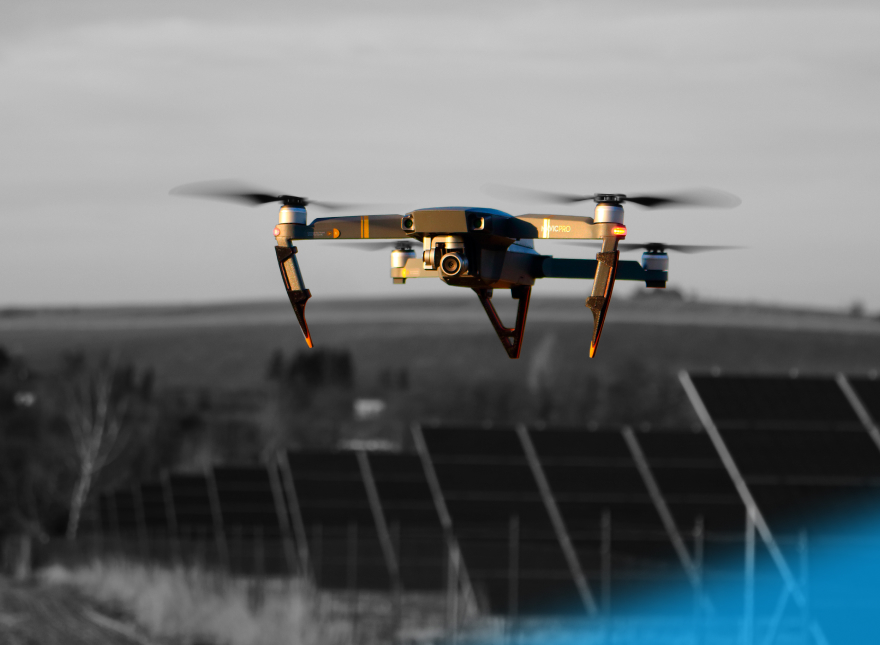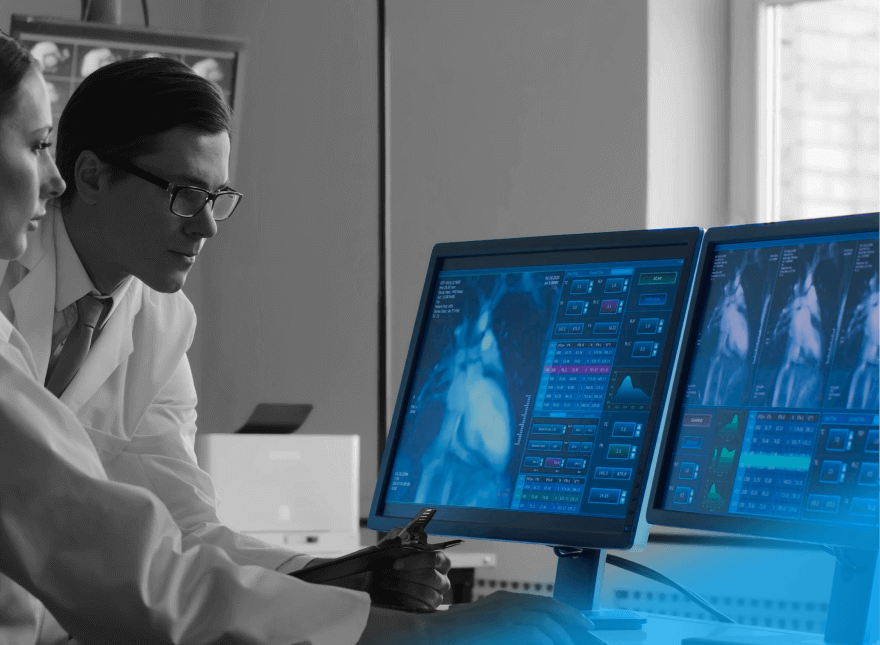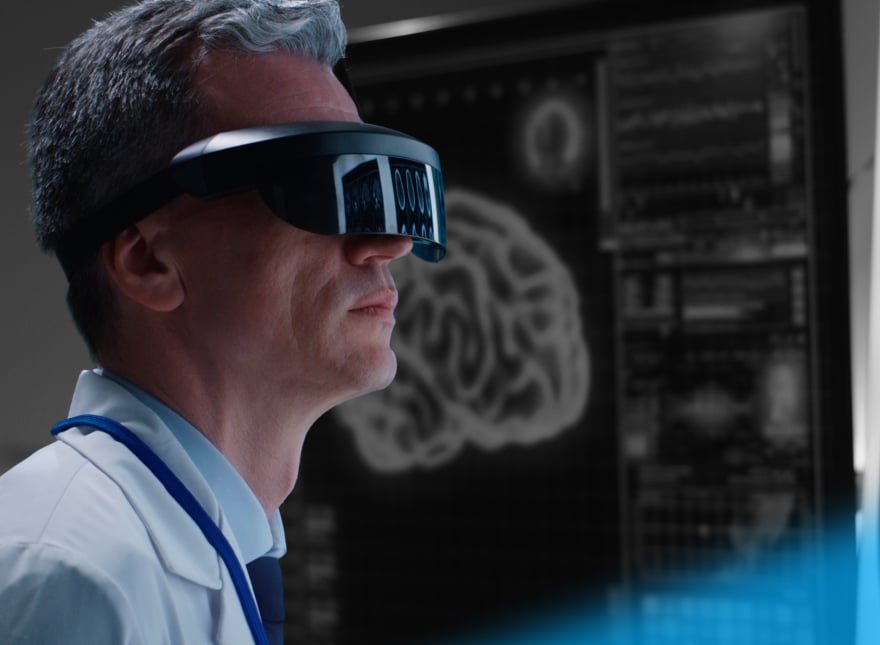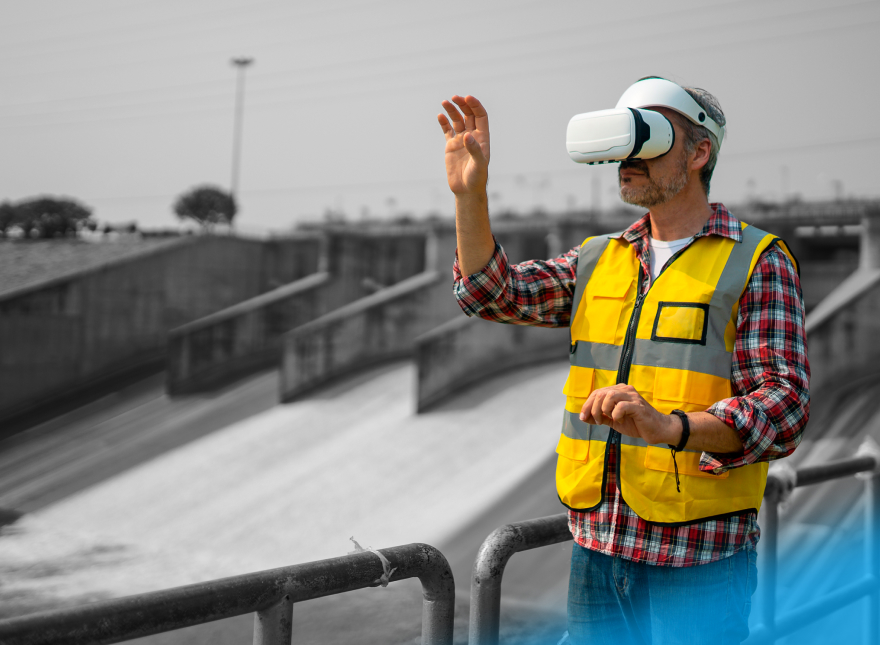Check out our latest blog article: From component to enterprise – modular robotics done right.
5 Edge Computing Use Cases: As Close As Needed

“Each signal matters.” This is a phrase from one of our clients. They contacted us to build an application for remote vital monitoring for seniors—check out the edge computing use case. Any signal from a wearable is processed on the edge. In the event of any emergency, the wearable would react right away and make a call. No signal goes unnoticed.
This example highlights the main benefits unlocked by IoT and edge computing:
- Real-time everything: monitoring, decision-making, and insights
- Fast response to accidents, customer requests, and asset malfunctioning
- Reduced costs on traffic and cloud servers
Let’s consider how different industries can benefit from this technology. Find out more about edge computing applications and the opportunities they can unlock.
What is Edge Computing (with Examples)?
Edge computing is a technology that processes data right where it’s created—at the edge. So, we have extra fast response time and immediate reaction to an event. That’s why edge computing is getting acclaim in the most risk-prone industries, like mining and healthcare. A senior from the Softeq case we mentioned above wouldn’t need to wait until the data finished its round trip to the cloud and back.
Here’s a list of five edge computing examples from different industries.
Use Case 1: Mining
Mining remains one of the most dangerous jobs in the world. Lack of control may lead to serious incidents. But setting up Wi-Fi in shafts and stopes underground is difficult and expensive. This means cloud solutions are not the best option.
However, safe work conditions remain a top priority in the industry, and this won’t work without process automation. Automation means that devices would collect and process data at the edge. Such devices can be controlled and adjusted remotely.
Real-Life Example: Ensuring Process Automation Underground
Bolodine is one of the largest mining companies in the world. It recently partnered with the telecom giant Ericsson for digitalizing Aitik, an underground mine in Sweden. Bolodine wanted to automate the most dangerous processes, like drilling blast holes. This would improve safety significantly.
Bolodine equipped drill rigs with sensors and cameras for remote control. Edge applications ensure their repetitive work continues autonomously, such as:
- Drilling a hole into the surface of the mine
- Packing it with explosive material
- Detonating
If an operator needs to modify a process, they can do so from a safe and remote location. Edge computing allows the mining company to remove human workers from the blasting process and avoid risking their lives.
Benefits at a Glance
- Ensuring miners’ safety
- Saving 1% of Bolodine’s total annual budget
- Using small solutions instead of buying new multi-million-dollar drill rigs
Use Case 2: Construction
Сonstruction companies buy functional equipment for millions of dollars. Unfortunately, its high price doesn’t guarantee 100% smooth work. Imagine that one day something fails. Management panics, downtime extends, and the company’s expenses increase.
That’s why businesses deploy predictive maintenance solutions. Edge computing is an essential part of this. The technology detects signs of unexpected equipment failure and sends an alert right away. This helps the company extend asset life and save a fortune on repairs.
Real-Life Example: Monitoring Production Issues in the Energy Sector
General Electric is a US company in the energy production industry. Among other things, it manufactures gas and steam turbines, engines, generators, and high-voltage equipment. One of the major problems in the production cycle is related to equipment health. Due to lack of control, the company couldn’t detect issues on time. As a result, manufacturing yields were reduced and the company incurred multi-million-dollar scrap costs.
Everything changed when they empowered their winding machines with edge computing technologies. Now, the equipment processes raw sensor data and quickly identifies failing machinery. This saves the entire manufacturing floor from disruptions and production delays.
Benefits at a Glance
- Yields increased by 8%
- Timely failure alerts
Use Case 3: Manufacturing
A modern industrial site is equipped with thousands of devices. They track temperature, humidity, start of operation, end of operation—everything. But using cloud solutions to process such an avalanche of data could cost you a fortune.
Edge technology offers an affordable alternative. Such solutions would process data right on the device. This would allow workers on the factory floor and managers to quickly react to accidents and manufacturing defects.
Real-Life Example: Zero Defect Culture in Steel Manufacturing
Harrison Steel Castings Company in Indiana produces carbon and steel castings for agriculture, energy, and oil and gas industries. The company has deployed a virtualization platform on site for faster operations and reduced risks and defects.
The solution relies on edge computing and a distributed architecture. Among other benefits, it helps identify defective parts produced in steel manufacturing. Harrison Steel Castings Company saves millions of dollars by tackling defects as early as possible.
Benefits at a Glance
- Automated quality control and diagnosis of steel defects
- Increased production efficiency
- Guaranteed product quality
Use Case 4: Healthcare
We’ve already mentioned one example of an edge application in senior care. Of course, the number of edge computing use cases in healthcare is far larger than this. In 2021, the American Hospital Association calculated nearly 14 million bedside devices. To collect medical data from all of them is a big challenge. To make use of it is another.
Edge computing is a perfect fit for real-time analysis of big files. Plus, it’s a go-to solution for virtual visits and consumer wearables which are booming in the post-COVID world. The technology allows clinicians to get alerts beyond hospital walls and physician exam rooms.
Real-Life Example: Exchanging Data Between Ambulances and the Hospital
We have seen many edge computing examples in remote patient monitoring and within hospitals. So why not equip ambulances with edge technology?
Here’s a use case with connected ambulances from Barcelona, Spain. Onboard medical devices collect and analyze the patient’s biometric data and compare it with their EHRs. That’s how paramedics know what treatment to give en route without a lot of consideration. And emergency room personnel receive alerts on how best to prepare the room for the patient’s specific care needs.
Benefits at a Glance
- Quick evaluation of a patient’s state in an extreme situation
- Accelerated registration process in hospitals
Use Case 5: Retail
Brick-and-mortar retailers use edge computing to stay relevant and compete with online stores. The technology helps improve customer experience in real-time. It doesn’t mean that a retailer should buy dozens of devices and place them inside a store instead of stock display. Space is money in the physical retail world. That’s why modern solutions combine multiple functions in a single device. Here’s how.
Real-Life Example: Automating Checkout with a Single Device
Cohesity is a California-based IT company. It builds data management solutions for global clients, including retailers. Its devices replace several hardware pieces and let a retailer save space to store and display products.
The device runs on a PoS machine and doesn’t require large amounts of computing power. It combines data from scanners and weighing equipment with video footage in the checkout area.
Benefits at a Glance
- Reduced accidental or fraudulent behavior at self-checkout
- Less hardware needed
Go Edge Computing Now to Win Competition Later
Every business wants to act on real-time data and do it without delay. Many rely on cloud-based autonomous systems which make quick decisions themselves. But are you ready to pay for large amounts of bandwidth every time a system like this sends raw data streams over the network?
Edge computing uses real-time data but does so in a cost-effective way. Data is processed within a device itself. So you save time and money while your business drives insight-led actions autonomously.
If you want to add edge computing to your product, Softeq can help you out. Our engineers know how to integrate on-device processing into your solution. Contact us to learn more.
More articles on the topic






